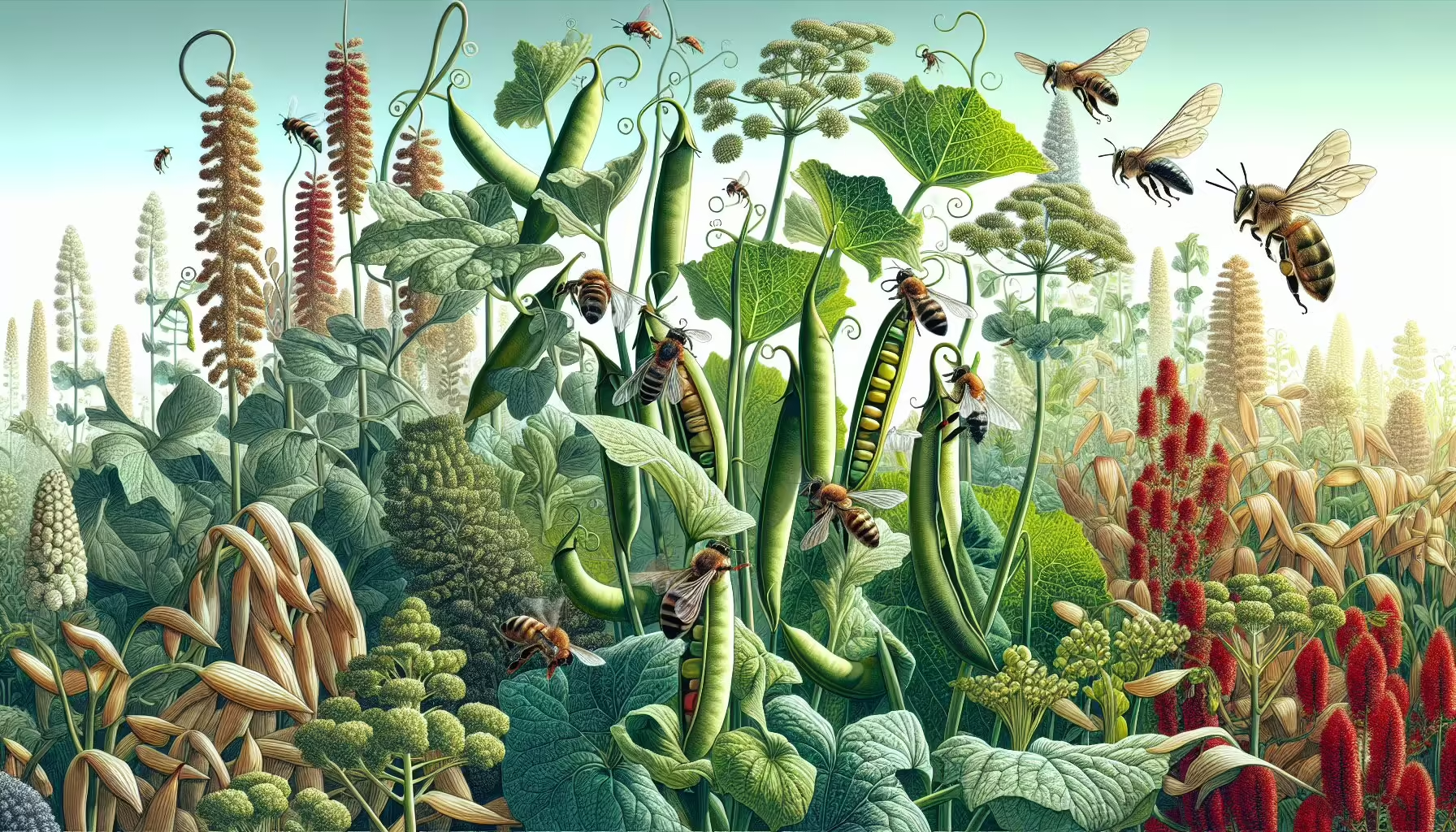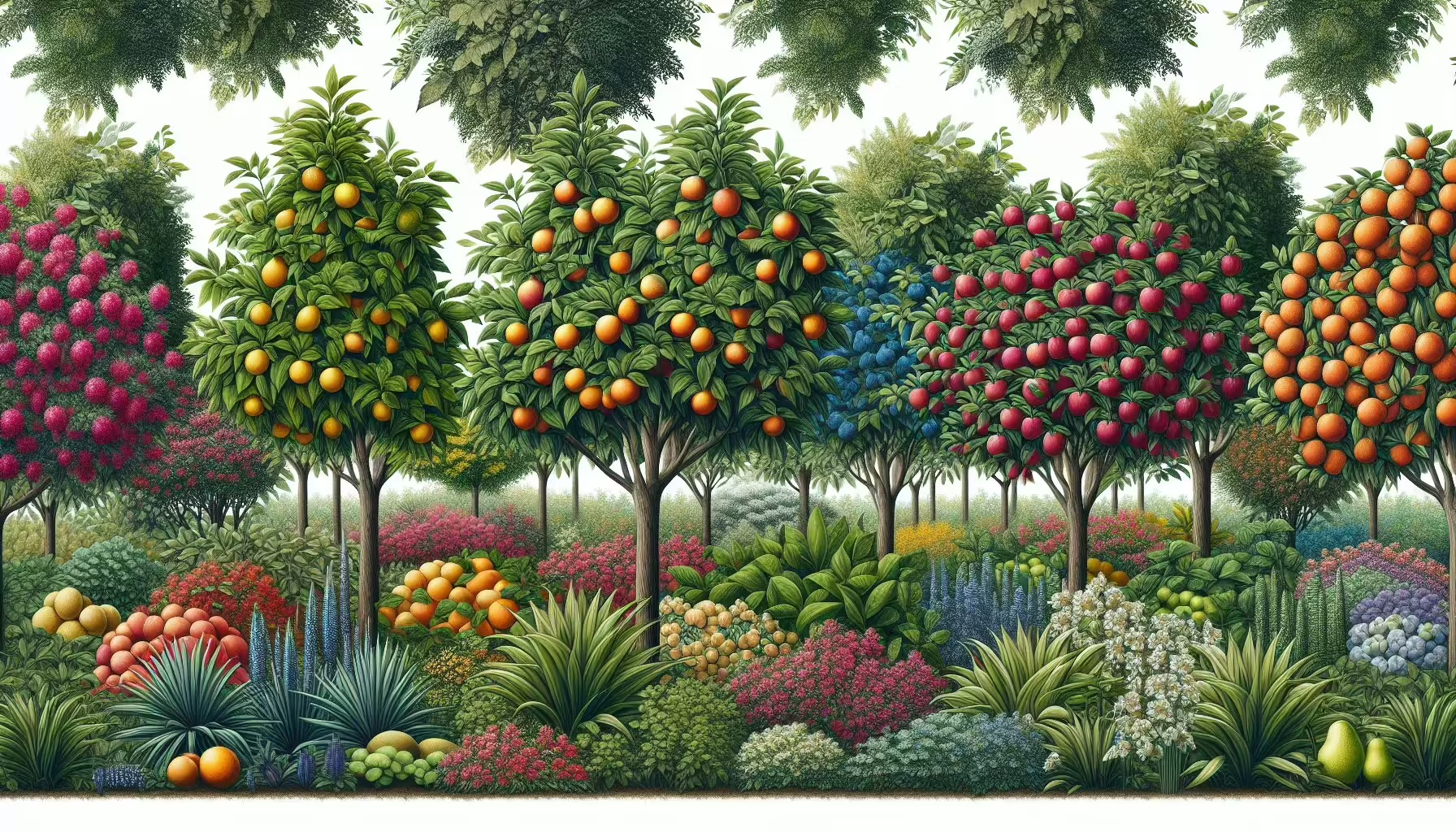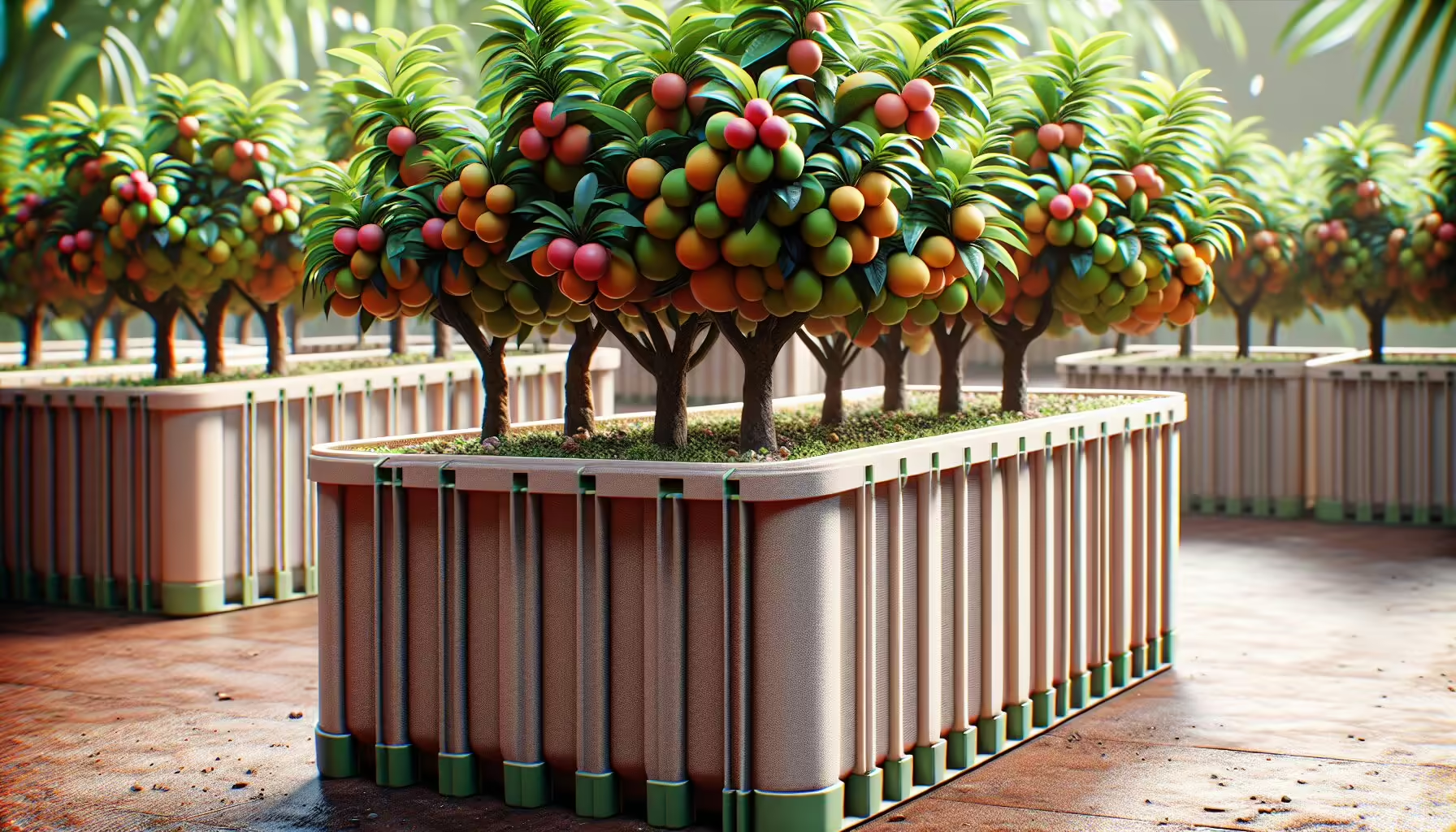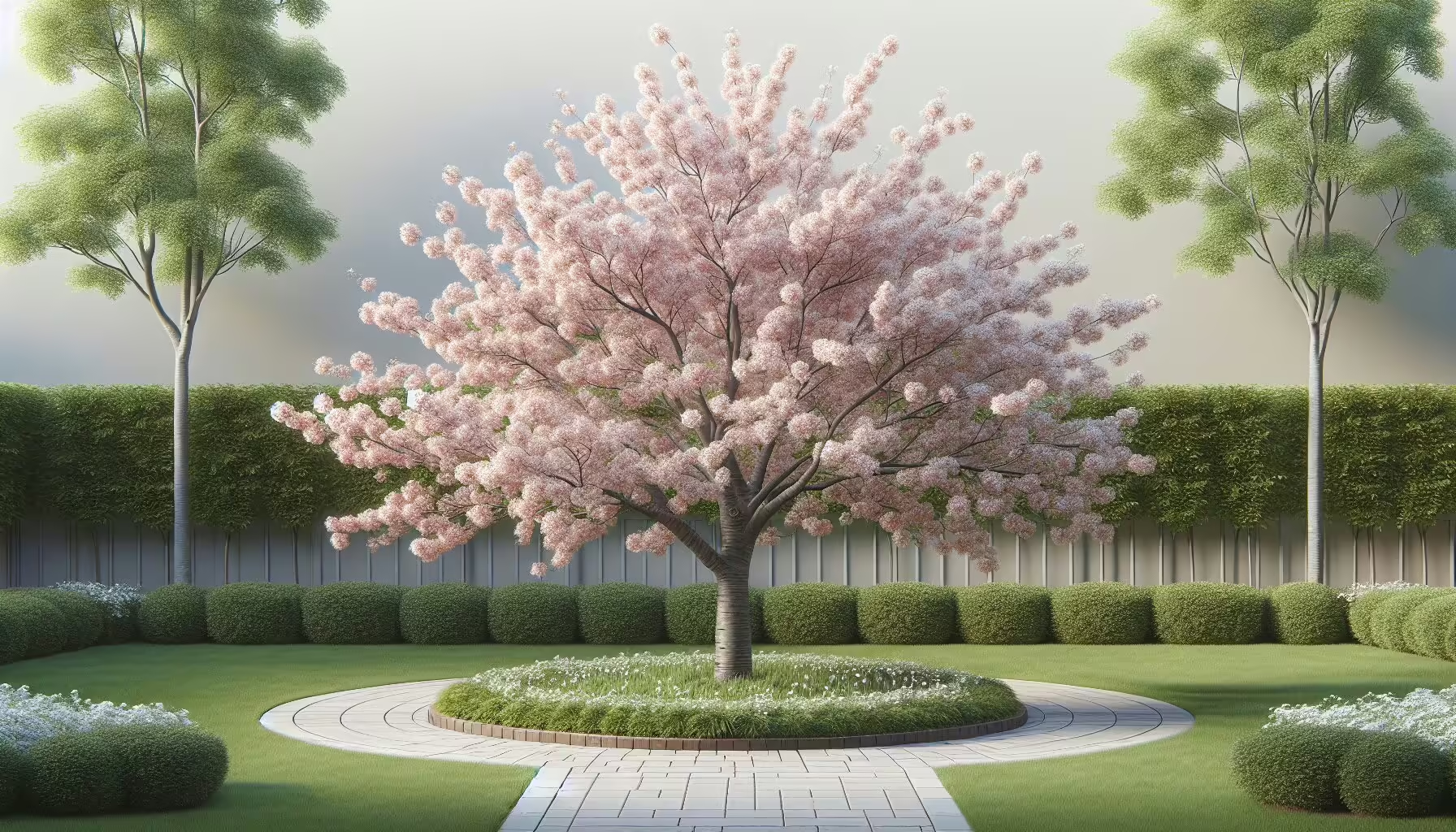Gardening with Purpose: A Heartfelt Seasonal Planting Guide for Edible Pollinator Gardens
Embracing Edible Pollinator Gardens
My Passion for Creating Pollinator-Friendly Spaces
I’m pretty captivated by the idea of crafting spaces perfect for pollinators. Watching bees and butterflies flutter around among lively flowers makes my soul dance a little jig. It’s not just about pretty scenery; it’s about stirring up a lively home for critters that also dishes out healthy grub. Every new season is a chance for me to turn my garden into a welcome mat for all the buzzing and fluttering visitors out there.
Importance of Seasonal Planting in Edible Pollinator Gardens
Grasping how seasonal planting works is a big deal if you want your edible pollinator garden to thrive—that’s how I see it. Each season rolls out its best plants, blooming right on schedule and laying down the welcome mat for local pollinators all year long. By picking plants made to shine in their season, I pep up my garden’s yield and keep the bug party going for bees, butterflies, and their pals.
| Season | Recommended Plants | Benefits |
|---|---|---|
| Spring | Lavender, Chives, Strawberries | Kickstart the pollinators, helps with natural pest battles |
| Summer | Sunflowers, Basil, Zucchini | Loads of nectar and pollen, boosts biodiversity |
| Fall | Asters, Goldenrod, Kale | Keeps the food flowing, gets ready for chillier days |
| Winter | Evergreens, Winterberry | Safe spot and food for our feathered friends |
Following a seasonal planting guide for edible pollinator gardens lets me craft a garden that’s good for both the local wildlife and my taste buds. With the right lineup of plants as the seasons change, my garden morphs into a cozy retreat that’s as friendly for folks as it is for the pollinators.
Spring Planting
Ah, spring! The season where the garden starts waking up—it’s like nature hitting the snooze button finally decides to get up. For those of us who love getting our hands dirty, planting season is both a joy and a chance to play a role in promoting our buzzing friends like bees and butterflies.
Best Plants for Spring
When it’s time to plant, I’m all about mixing it up with flowers, herbs, and veggies that kick into high gear early on. These guys not only feed pollinators, they also soak up the cool spring weather. Here’s what I swear by:
| Plant Type | Options |
|---|---|
| Flowers | Lavender, Salvia, Borage, Bee Balm, Coneflower |
| Herbs | Chives, Thyme, Oregano, Basil |
| Vegetables | Peas, Spinach, Radishes, Lettuce |
Putting these into my patch makes everything pop, attracting pollinators like a bee to honey (literally). If you want the details on what to grow, check out my guide on the best plants for tasty pollinator gardens.
Tips for Spring Planting Success
To nail the whole “edible pollinator garden” look, I stick to a few tried-and-true tricks:
-
Soil Prep: I boost my soil’s game by mixing in compost, giving seeds a five-star start in life. For all the dirt (pun intended) on prepping, here’s my soil prep how-to.
-
Timing: Timing is everything. I wait until after the last frost to pop those plants in the ground. Local gardening spots usually have your back with frost dates.
-
Spacing: Giving each plant room to breathe and stretch its roots makes for a healthy garden. Just imagine social distancing, but for plants.
-
Watering: Keeping those little sprouts hydrated is the name of the game. I aim for deep, not-too-frequent watering—it’s like training them for a marathon.
-
Companion Planting: Pairing plants like a sommelier pairs wine and cheese can fend off pests and boost growth. Check out my thoughts on mate-matching plants.
By sticking to these steps, my garden not only survives but thrives. These methods help make sure my corner of the world stays buzzing and blooming all season long.
Summer Planting
Growing a garden that feeds both people and pollinators in the summer can really make you smile. This season, there’s a unique opportunity to plant greenery that draws bees, butterflies, and even provides delicious veggies for your kitchen.
Ideal Summer Plants
When picking out summer plants, I make sure they love the heat and provide food for both insects and people. Here are a few of my go-to choices that help the local bugs do their thing while offering tasty bits for us:
| Plant Type | Pollinator Buddy | Yummy Part |
|---|---|---|
| Sunflowers | Friends with bees and butterflies | Snack on seeds |
| Lavender | Welcomes bees | Flowers for cooking |
| Zinnias | Butterfly-friendly | Edible blooms |
| Basil | Bee magnet | Leaves for cooking |
| Coneflower | Pollinator party | Flower tea time |
| Calibrachoa (Million Bell) | Calling all hummingbirds | Edible flowers |
These beauties not only dress up my garden but also play a big part in helping out the local insect crowd.
Caring for Your Garden in the Summer
Keeping my edible pollinator garden thriving through summer takes a bit of know-how. Here’s what I stick to:
-
Watering Regularly: I make sure to soak my plants deeply, especially when it’s blazing outside. Keeping the dirt nice and damp helps roots grow deep and plants stay strong. Aim for about an inch of water per week, maybe more during a dry streak.
-
Throwing Down the Mulch: I lay some organic mulch around the plant bases to hold onto moisture, keep weeds away, and feed the soil as it breaks down. This trick lessens the watering workload and creates a comfy home for good garden critters.
-
Handling Pests: I play it safe with bugs by letting other helpful insects get in the mix. Planting the right neighbors keeps everything in check. When things get out of hand, I lean on nature-friendly solutions.
-
Harvest Time: Picking vegetables and herbs often means tastier treats and encourages more growth. Tossing flowers in my salads is a visual treat and a taste boost, too.
-
Feeding the Earth: Every now and then, I add some organic fertilizers to keep the soil and plants happy. Compost is a favorite for giving the soil a boost. For more ideas, check out our guide on the top organic fertilizers.
By treating my garden well in the summer, I get to enjoy both the flavor and the folks who help make it all grow.
Fall Planting
As autumn rolls in with its tapestry of colors and crisp breeze, my garden’s calling for some fall planting love. This season has its charm and hoeing into it can bring some unexpected joys—plus the local pollinators get a little boost too.
Must-Have Fall Plants
When choosing plants for this chillier time, I zero in on ones that not only charm the bees and butterflies but also put something tasty on the table. Here are my top picks for fall planting:
| Plant Name | Pollinator Buddies | Edible Bit | Bloom Season |
|---|---|---|---|
| Asters | Bees, Butterflies | Leaves, Nectar | Late Summer-Fall |
| Goldenrod | Bees, Monarchs | Nectar | Late Summer-Fall |
| Fall Blooming Sedum | Bees, Flies | Foliage, Flowers | Late Summer-Fall |
| Calendula (Pot Marigold) | Bees, Butterflies | Petals (yummy) | Late Summer-Fall |
| Chives | Bees | Flowers, Leaves | Spring-Fall |
These stars don’t just look pretty and seduce pollinators—they spice up my garden’s mix of life and vitality.
Preparing Your Garden for Fall
Getting my garden fall-ready means rolling up my sleeves for some prep work. Here’s the rundown:
- Tidy Up: Time to yank out any plant bits that bit the dust or caught a case of the yuckies. Keeps the bad bugs and lurgy at bay.
- Mulch Madness: A cozy mulch blanket keeps the ground snug, holds in moisture, shuts nasty weeds out, and guards plant roots from the chill.
- Soil Game Plan: Checking up on my soil’s pH and its nutritional snacks is a must. I often jazz it up with a sprinkle of compost or fertilizer before winter steals the show. Check my detailed scoop on soil talk for edible pollinator gardens.
- New Seedlings: Cooler weather means perfect sowing time for frost-friends like kale and some spinach types.
- Don’t Dry Out: Giving my green guys a good drink before frost hits makes sure they go through winter without a hitch.
By picking the right posies and gearing up my garden, I’m not just growing plants—I’m cheering on a buzzing community of bees, butterflies, and other pollinator pals. Fall planting isn’t just a hobby—it’s my little way of keeping nature’s party going.
Winter Care
Takin’ care of my edible pollinator garden in winter ain’t just a chore; it’s like giving it a big hug with a lotta love and thinking ahead. If I do right by it now, it’ll reward me when the snow melts away.
Winter Maintenance Tips
Winter is all about getting ready and laying low. Here are some real-deal tips for keepin’ my garden in tip-top shape during those frosty months:
| Task | Description |
|---|---|
| Mulching | I throw a cozy blankie of mulch over the soil and plant roots. It keeps the damp in and the frost out. |
| Pruning | I snip off the sad and scraggly branches from my perennials. When spring rolls in, they’ll be ready to burst. Got a hankerin’ to learn more? Check out pruning techniques for edible pollinator plants. |
| Watering | On a dry spell, I give my plants a drink. Even the sleepy-heads need water to make it through. |
| Soil health | Sometimes I test the dirt to see what’s missin’. That way, come spring, I’m ready to juice it up. Wanna know more? I’ve got my thoughts on soil preparation for edible pollinator gardens. |
Planning for the Next Season
Winter ain’t just for sipping hot cocoa—it’s prime time for garden dreamin’. Here’s what I do to map out a boomin’ garden:
| Planning Step | Description |
|---|---|
| Seed Selection | I take a look-see at seeds that’ll feed me and the buzzing buddies. Need pointers? I’ve got a piece on best companion plants for edible pollinator gardens. |
| Designing Layout | I doodle out garden plans, maybe even get a bit fancy with vertical gardening. Peek at my ideas for getting high-rise with your veggies at vertical gardening ideas for edible pollinator plants. |
| Composting | Trash turns to treasure here. All my kitchen bits end up in the compost pile to beef up that soil again. Catch more on composting tips for edible pollinator gardens. |
| Attracting Pollinators | I figure out which critters I’m inviting and roll out the floral carpet by planting some local delights. I’m spillin’ the beans in my guide on native edible plants that support local pollinators. |
Winter’s my time to give a little love and plan for bright, buzzing days ahead. Whipping my garden into shape now means come springtime, it’s not just a feast for me but a buffet for the bees too.
Lasting Impact
Planting an edible pollinator garden isn’t just popping some seeds into dirt—it’s creating a little world where plants and pollinators team up to help us get food on the table. I’m here to share how I keep my patch of sunshine looking happy and buzzing while feeling pretty darn satisfied watching it all unfold.
Sustaining Your Edible Pollinator Garden
Keeping my garden buzzing with life means sticking to a routine and knowing what each plant and bug needs to stick around. Without stressing too much about it, I jot down tasks like watering, weeding, and plucking ripe veggies. Can’t forget giving some love to the dirt—my plants deserve the good stuff! Below is my garden routine to keep things in check:
| Task | How Often |
|---|---|
| Watering | Weekly |
| Weeding | Every couple weeks |
| Harvesting | When it’s ready |
| Fertilizing | Once a month |
| Composting | Keep it coming |
| Soil Testing | Twice a year |
Adding in stuff like compost helps the soil stay healthy and makes the bugs dig it, too. When pests try to crash the party, I opt for organic ways to handle them so the birds and bugs can keep doing their thing.
The Joy of Creating a Haven for Pollinators
The happiness I get from my garden is something special. It feeds me and my family while being a safe spot for bees and butterflies. Watching a hummingbird flit by makes me feel like I’m doing a good thing for our planet.
I mix in different flowers that pop up with the seasons so the bees always have a snack bar open. Edible flowers are a win-win—they’re pretty and butterflies love them! Plus, I might sprinkle them into a salad for a fancy twist. If you want more about those tasty blooms, I talk about it over here.
Creating little weather pockets in my garden keeps the diverse plant crew happy and buzzing. If you’re interested, I have some tips on setting up those mini zones to help everything flourish.
To sum it up, my connection with nature through the garden is something I wouldn’t trade for the world. If you love the idea of sharing your space with buzzing bees and fluttering butterflies, then building a pollinator garden is a gift that’ll keep on giving. It’s not just about what’s on your plate but also about nurturing a lively, happy patch of earth everyone can thrive in.




Post Comment